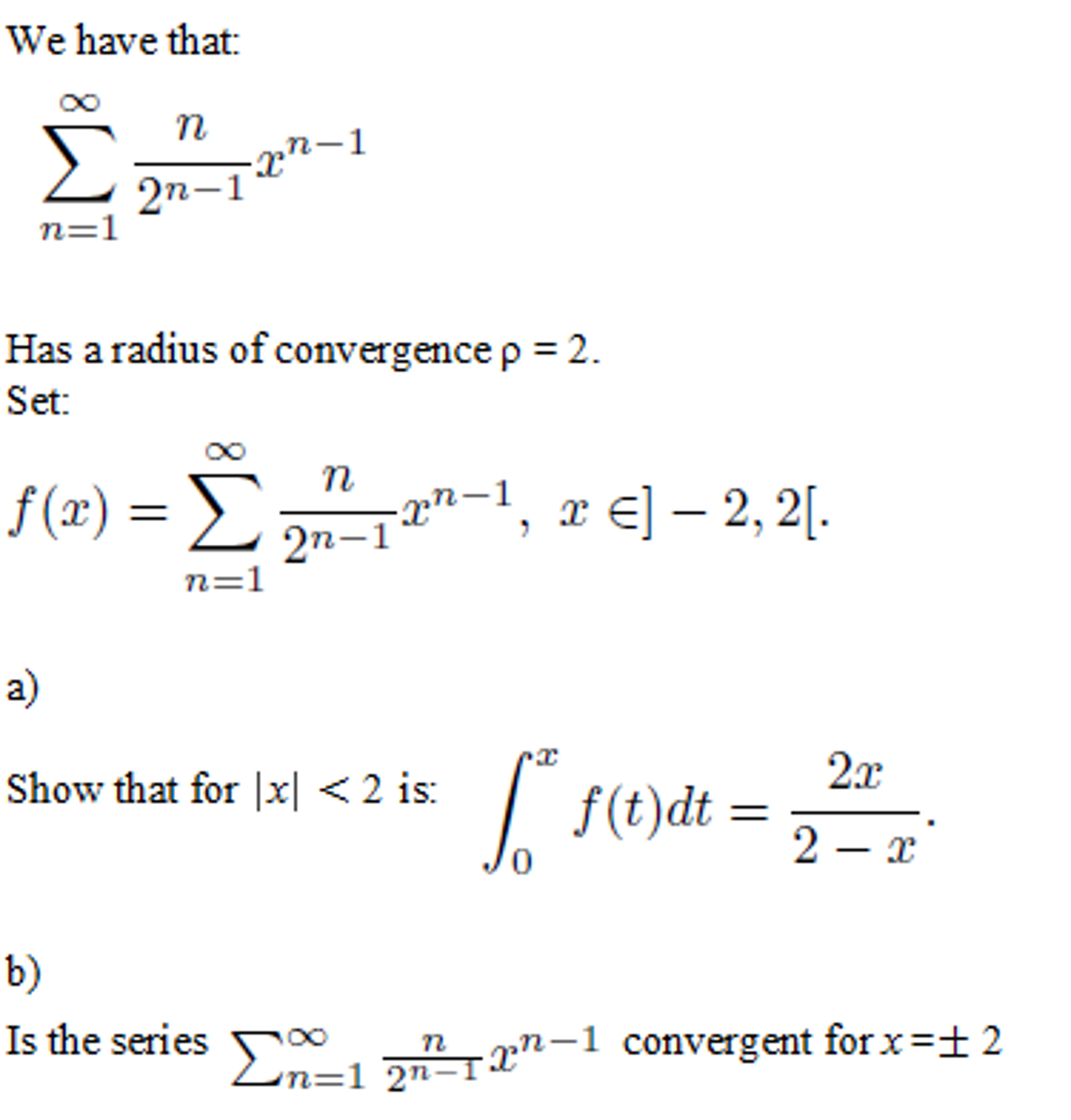
Solved For each n Elementof N, let x_n = (1 + 1/n)^n. By the
Algebra Simplify (n-1) (n+1) (n − 1) (n + 1) ( n - 1) ( n + 1) Expand (n−1)(n+ 1) ( n - 1) ( n + 1) using the FOIL Method. Tap for more steps. n⋅n+n⋅ 1−1n−1⋅1 n ⋅ n + n ⋅ 1 - 1 n - 1 ⋅ 1 Simplify terms. Tap for more steps. n2 − 1 n 2 - 1

probability How do you get (n1)! \over n! from 1 \over n Mathematics Stack Exchange
The quotient N − 1 N − 1 instead of N N just makes computations nicer and obviates the need to haul around factors like 1 − 1/N 1 − 1 / N. The full answer to this question would have to introduce the sampling inference where the sample indicators are random, and the values of observed characteristics y y are FIXED. Non-random. Set in stone.

Solved Calculate The Sum Of The Series Sigma N=1 1/n(n+2)
The exponent says how many times to use the number in a multiplication. A negative exponent means divide, because the opposite of multiplying is dividing. A fractional exponent like 1/n means to take the nth root: x (1 n) = n√x. If you understand those, then you understand exponents!

ホンダ NONE(エヌワン)の乗り心地はいかに by 車選びドットコム
The n-1 equation is used in the common situation where you are analyzing a sample of data and wish to make more general conclusions. The SD computed this way (with n-1 in the denominator) is your best guess for the value of the SD in the overall population.

Proof of (1+1/n)^n=e YouTube
28 Find limn→∞((n!)1/n) lim n → ∞ ( ( n!) 1 / n). The question seemed rather simple at first, and then I realized I was not sure how to properly deal with this at all. My attempt: take the logarithm, limn→∞ ln((n!)1/n) = limn→∞(1/n) ln(n!) = limn→∞(ln(n!)/n) lim n → ∞ ln ( ( n!) 1 / n) = lim n → ∞ ( 1 / n) ln ( n!) = lim n → ∞ ( ln ( n!) / n)

Solved Show that sigma^n_k = 1 k = 1 n(n + 1)/2 for all n
n! = n × (n−1)! Which says "the factorial of any number is that number times the factorial of (that number minus 1) " So 10! = 10 × 9!,. and 125! = 125 × 124!, etc. What About "0!" Zero Factorial is interesting. it is generally agreed that 0! = 1.

Solved (2) Let Follow the following procedures to prove that
The A-Co-N-C has a large surface area of 455 m 2 g −1 with micropores (101 m 2 g −1) and mesopores (354 m 2 g −1). The A-Co-N-C exhibits good bifunctional catalytic ORR/OER and Zn-air battery activity with a high peak power density (240 mW cm −2). This work provides a simple but efficient strategy for constructing hierarchically porous.
n(n + 1) (n +5) is divisible by 6.
Passengers - N/A Significant damage to two UAs Permission for Commercial Operations (PfCO) 36 years. 34 hours (of which 32 were on type) Last 90 days - 3 hours Last 28 days - 1 hour Aircraft Accident Report Form submitted by the pilot. A swarm of 638 UAs took of as part of a planned test of a light display. The preprogramed launch and.
lim(n!/(mn)^n)^1/n is equal to ? n>infinity askIITians
series 1/ ( (1 + 1/n)^n) Have a question about using Wolfram|Alpha? Give us your feedback ». Compute answers using Wolfram's breakthrough technology & knowledgebase, relied on by millions of students & professionals. For math, science, nutrition, history, geography, engineering, mathematics, linguistics, sports, finance, music….

ホンダNONE マイチェン スタンダード/セレクト/プレミアム/RS AUTOCAR JAPAN
Rather (n+1)!= (n+1)(n)(n−1)! now just cancel it with (n−1)! thats all. Solve for k ∈ Z such that f (19992π) = 2k1 where f (x) = ∏n=1999 cos(nx). You are on the right track. But you need to do this not mod p but modulo pα, where α is the largest power of p dividing n.

Solved We have that sigman = 1^infinity n/2^n 1 x^n 1
This video explains how to answer questions on Ratio - Expressing as 1:n.

Solved Take for granted that the limit lim (1 + 1/n)^n
The Triangular Number Sequence is generated from a pattern of dots which form a triangle: By adding another row of dots and counting all the dots we can find the next number of the sequence. But it is easier to use this Rule: x n = n (n+1)/2. Example: the 5th Triangular Number is x 5 = 5 (5+1)/2 = 15,

Find the sum of the following ( 1
#1 jav 35 0 I know lim n^ (1/n) = 1 n->infininity Does anyone have ideas on how to prove this? I feel like its something simple I am missing. Thanks Last edited: Mar 19, 2010 Physics news on Phys.org Using 'Kerr solitons' to boost the power of transmission electron microscopes First direct imaging of tiny noble gas clusters at room temperature

[B!] 新型「NONE」乗って確かめた進化の本気度 試乗記 東洋経済オンライン 経済ニュースの新基準
n & (n-1) helps in identifying the value of the last bit. Since the least significant bit for n and n-1 are either (0 and 1) or (1 and 0) . Refer above table. (n & (n-1)) == 0 only checks if n is a power of 2 or 0. It returns 0 if n is a power of 2 (NB: only works for n > 0 ).

Root Test for Infinite Series SUM(1/n^n) YouTube
Answer link Answer: 1/n Factorial mean multiply the all the number by counting down. ( (n-1)!)/ (n!) = [ (n-1) (n-2) (n-3)!]/ ( (n) (n-1) (n-2) (n-3)! = [cancel ( (n-1) (n-2) (n-3)!)]/ ( (n)cancel ( (n-1) (n-2) (n-3)!) = 1/n

Find the limit of 1/(n+1) + 1/(n+2) + 1/(n+3) + + 1/6n as n tends to infinity YouTube
Knowing n-1 scores and the sample mean uniquely determines the last score so it is NOT free to vary. This is why we only have "n-1" things that can vary. So the average variation is (total variation)/(n-1). total variation is just the sum of each points variation from the mean.The measure of variation we are using is the square of the distance.